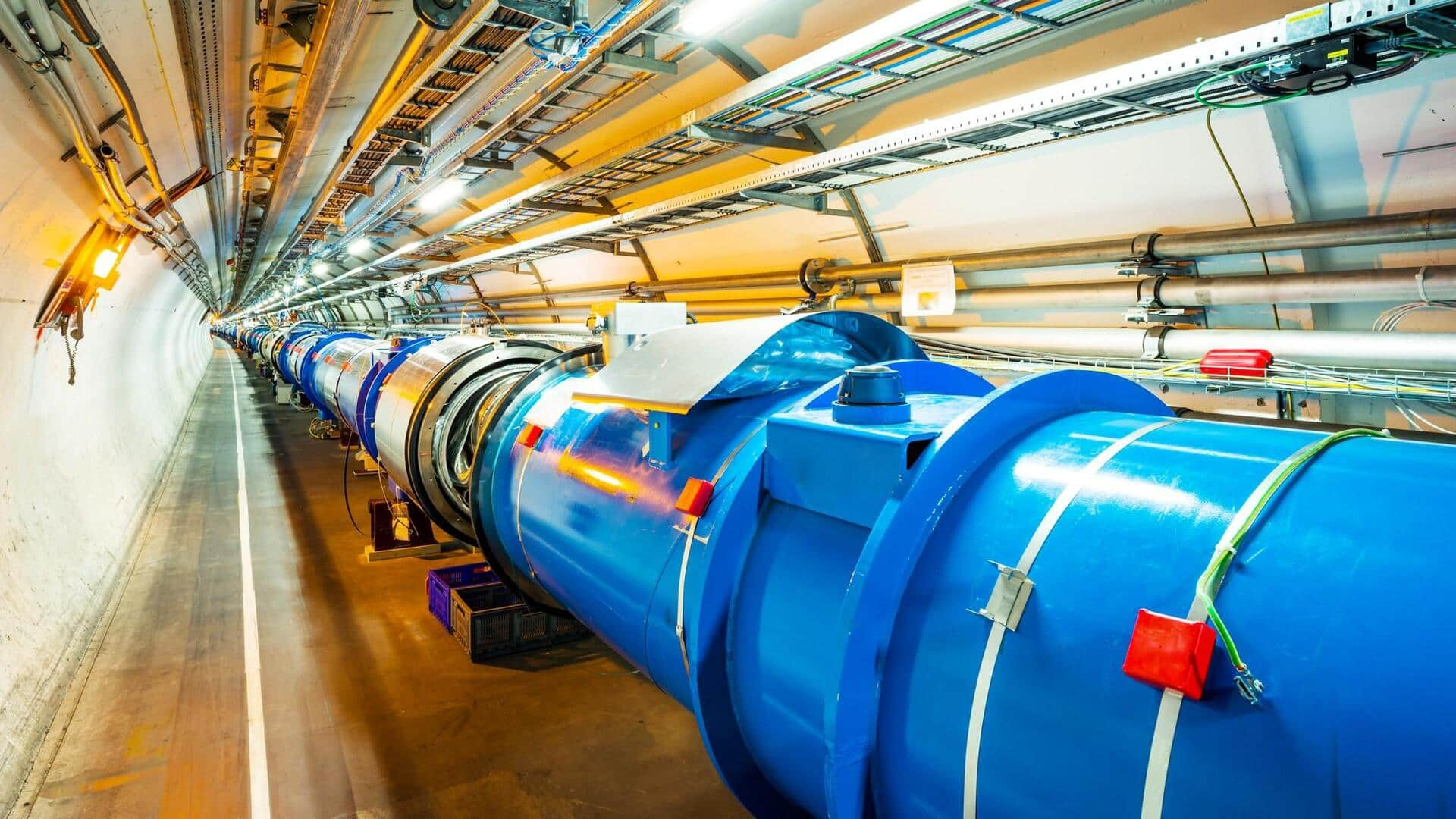
Do magnetic monopoles exist? Scientists eyeing potential discovery
What's the story
Scientists are inching closer to confirming the existence of magnetic monopoles, using a decommissioned section of the beam pipe from CERN's Large Hadron Collider. The research team, led by scientists from the University of Nottingham and an international group, scrutinized a beryllium beam pipe section that was previously situated at the particle collision point for the Compact Muon Solenoid (CMS) experiment. This pipe had withstood radiation from billions of ultra-high-energy ion collisions occurring just centimeters away.
Research insights
Beam pipe's proximity to collision point offers unique opportunity
The research team has provided the most rigorous constraints yet on the existence of magnetic monopoles, pushing the boundaries of our understanding of these elusive particles. Aditya Upreti, a PhD candidate who led the experimental analysis while working in Professor Ostrovskiy's MoEDAL group at the University of Alabama, stated, "The proximity of the beam pipe to the collision point of ultra-relativistic heavy ions provides a unique opportunity to probe monopoles with unprecedentedly high magnetic charges."
Trapping mechanism
It is expected to trap monopoles
Upreti further explained, "since magnetic charge is conserved, the monopoles cannot decay and are expected to get trapped by the pipe's material, which allows us to reliably search for them." This trapping mechanism is a key aspect of their research approach. Oliver Gould, Dorothy Hodgkin Fellow at the University of Nottingham, highlighted, "Could there be particles with only a single magnetic pole, either north or south? This intriguing possibility...has remained one of the most captivating mysteries in theoretical physics."
Scanning process
Beam pipe scanned for trapped magnetic monopoles
The beam pipe was exposed to Pb-Pb collisions at 2.76 TeV center-of-mass energy per collision in December 2011, before being removed in 2013. It was then scanned by the MoEDAL experiment using a SQUID magnetometer to look for trapped magnetic monopoles (MMs). The study, published in Physics Review Letters, did not observe any MM signal but set the first reliable, world-leading mass limits on MMs with high magnetic charge.
Discovery potential
A promising place to find magnetic monopole
Despite being an old piece of pipe destined for disposal, the researchers suggest it might be the most promising place on Earth to find a magnetic monopole. The MoEDAL collaboration used a superconductive magnetometer to scan the beam pipe for signatures of trapped magnetic charge. While they didn't find evidence of magnetic monopoles, their results exclude the existence of monopoles lighter than 80 GeV/c^2 and provide world-leading constraints for magnetic charges ranging from two to 45 base units.